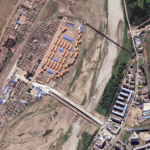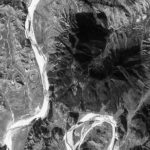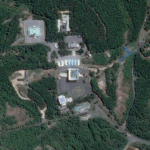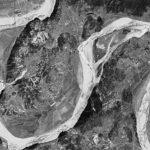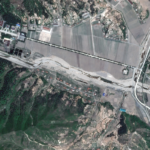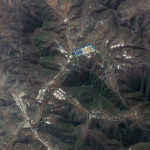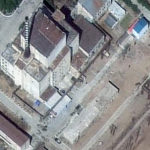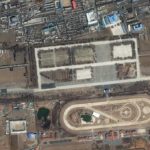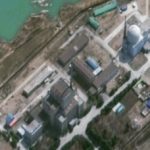July 22, 2019, by Joseph S. Bermudez Jr. and Victor Cha—
Satellite imagery shows that the new Namyang-Tumen road bridge connecting North Hamgyong province in North Korea with China is nearing completion and could be open to traffic as early as the end of 2019... Satellite imagery shows that the new Namyang-Tumen road bridge connecting North Hamgyong province in North…
July 18, 2019, by Joseph S. Bermudez Jr.—
Acquired almost two years after the image provided in Yongbyon Declassified Part III (February 11, 1966), this December 10, 1967 image of the Yongbyon Nuclear Research Center is one of the first acquired by the improved reconnaissance KH-4B. Among other improvements, the resolution of the newer KH-4B was 1.8 meters versus 2.7 meters of the earlier KH-4A allowing for considerably better image quality.
July 2, 2019, by Victor Cha and Joseph S. Bermudez Jr.—
As the first sitting president in U.S. history to step into North Korea, Donald Trump’s action could be seen as a significant representation of the U.S. intention eventually to conclude a peace treaty... As the first sitting president in U.S. history to step into North Korea, Donald Trump’s…
June 20, 2019, by Joseph S. Bermudez Jr.—
Acquired seven months after the image provided in Yongbyon Declassified Part II (August 23, 1965) this 2.7-meter resolution image covers the Yongbyon area on February 11, 1966. While the general area remains primarily engaged in agricultural activity typical of rural North Korea during the 1960s, significant construction activity is observed at the nascent Yongbyon Nuclear Research Center and adjacent village of Sang-dong.
June 20, 2019, by Joseph S. Bermudez Jr. and Victor Cha—
Satellite imagery of the No. 112 Factory (sometimes identified as the January 12th Factory) located in Kusong, North Pyongan suggests that North Korea is constructing a monument memorializing its first successful Hwasong-12 intermediate range ballistic missile (IRBM) launch on May 14, 2017.
May 9, 2019, by Joseph S. Bermudez Jr. and Victor Cha—
Located 150 kilometers north of the DMZ, North Korea's Yusang-ni missile operating base is one of the more recently constructed Strategic Force missile operating bases. There has been almost no open source information about this base until this study.
April 18, 2019, by Joseph S. Bermudez Jr. and Victor Cha—
April 15 railcar movement observed in Airbus satellite imagery at North Korea's Yongbyon facility provides no further understanding concerning the presence of these specialized railcars other that their probable use for the movement of radioactive material.
April 16, 2019, by Joseph S. Bermudez Jr. and Victor Cha—
DigitalGlobe satellite imagery of North Korea’s Yongbyon Nuclear Research Facility acquired on April 12th shows the presence of five specialized railcars near the Uranium Enrichment Facility and the Radiochemistry Laboratory.
In the past these specialized railcars appear to have been associated with the movement of radioactive material or reprocessing campaigns.
April 10, 2019, by Joseph S. Bermudez Jr. and Victor Cha—
On the eve of President Trump’s summit with ROK president Moon Jae-in, commercial satellite imagery acquired on April 7 shows that, although not conclusive, North Korea may be preparing for a parade to honor Kim Il-sung’s birthday (April 15) or KPA Foundation Day (April 25).
April 1, 2019, by Joseph S. Bermudez Jr. and Victor Cha—
Commercial satellite imagery of North Korea’s Yongbyon Nuclear Research Facility acquired on March 28th shows normal operations with a low-level of activity throughout the facility... Beyond Parallel datasets have found that North Korea will engage in provocative acts on average…
